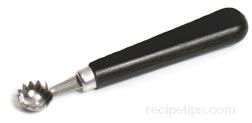To check the fish for doneness, use the tip of a sharp knife and cut through the thickest part of the fillet. If the fish has been properly cooked, the meat will appear opaque but will still be moist and flake easily..
Loading
Mako Shark
One of the many species of shark, it is found in the moderate and tropical waters of the Atlantic and Pacific oceans and can grow to be 1000 pounds within a period of five to six years. Mako sharks must be bleed out immediately after catching and put on ice. The shark's blood contains urea, which breaks down to ammonia after the fish dies. This can give the shark meat an ammonia taste and smell. Mako shark is a fairly inexpensive fish with ivory-pink meat that has a dense texture, a mild flavor and contains a moderate amount of fat. Often compared to swordfish, its flavor is enhanced with the addition of spicy flavoring when cooking. If not available, most recipes can have the Mako shark substituted with a meaty fish, such as tuna, catfish, marlin and swordfish. When selecting Mako shark, smell the fish first to determine if there is an aroma of ammonia. If the ammonia smell is slight, the meat should be alright, but if it has a strong ammonia aroma, the fish should not be purchased. A slight ammonia smell can be eliminated by soaking the fish in an acidic solution of water and lemon juice or vinegar. Cover the fish with cold water and add 1/2 teaspoon of lemon juice or one tablespoon of vinegar for each pound of shark you are soaking. Allow the shark to soak in the refrigerator for at least 4 hours. When the ammonia smell is strong, it is an indication that the shark was not properly handle when first caught, has not been properly stored, or that it is no longer fresh. Soaking the shark at this point will not eliminate the ammonia smell or taste.
There currently aren't any reviews or comments for this term. Be the first!
Advertisement
Advertisement











